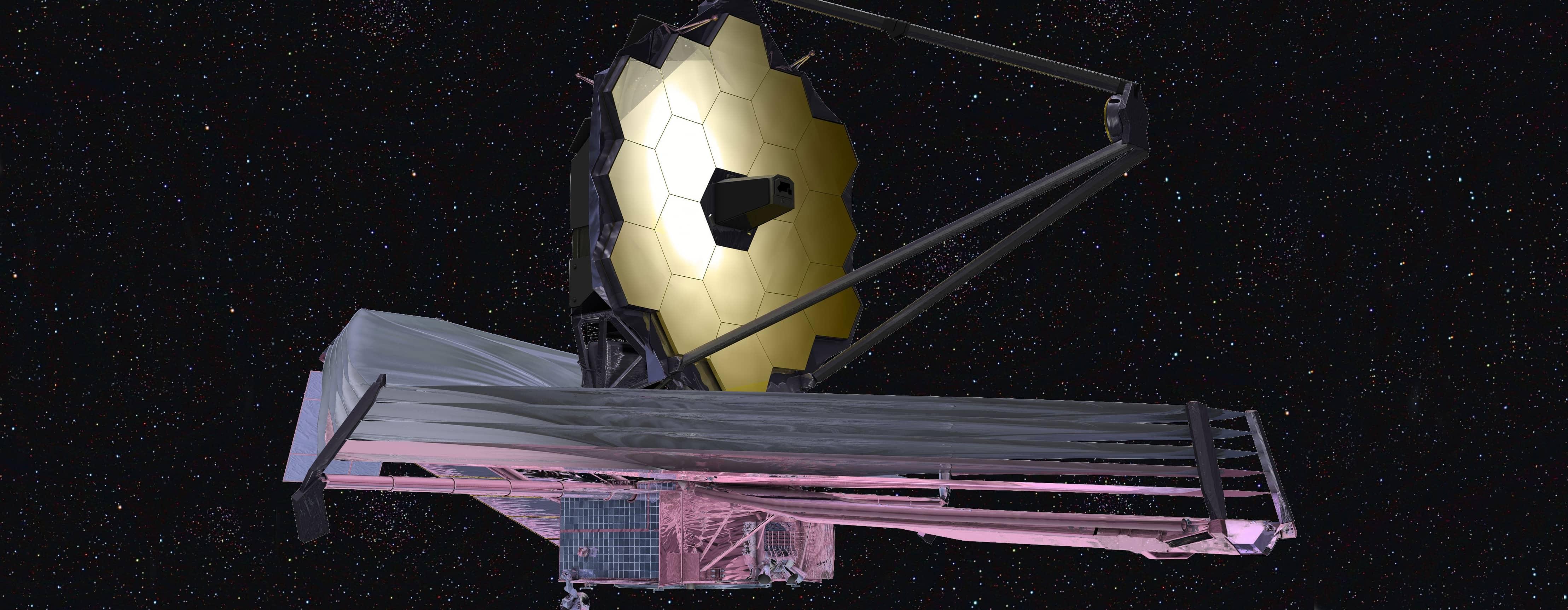James Webb Space Telescope Honors NC Native


NASA is making history by sending the largest, most sophisticated, most powerful, and most expensive telescope ever made into space.
And it’s named after a native of Granville County.
We’re talking about the James Webb Space Telescope (JWST). The instrument is named in honor of James E. Webb who was born in the Granville County township of Tally Ho and grew up in Oxford. Webb graduated from Oxford High School and went on to get a degree in education from the University of North Carolina at Chapel Hill.
The Webb Space Telescope has been in development for 25 years. It carries a price tag of $10 billion. NASA says this successor to the Hubble Space Telescope will help to reveal the origin of the first stars and galaxies.
Webb served as NASA’s second appointed administrator. Vice President Lyndon Johnson was intrigued by Webb’s skills as an administrator, his military and government finance experience and his work leading complex scientific projects. Webb was initially reluctant to take the position when it was offered, thinking an engineer or scientist would be a better fit.
But Johnson persisted, Webb agreed, and went on to lead the agency through its largest buildup ever; the Mercury, Gemini and Apollo programs.
NASA officials say they selected Webb as the name for its telescope because he advocated that science remain a part of the agency's portfolio in the 1960s, even as attention and budget focused on human spaceflight.
“Without James Webb’s leadership, there may have been no telescope or much of anything else at NASA noteworthy of a naming controversy,” said Sean O’Keefe, NASA Administrator during the Webb Telescope's early days.
You could call the JWST NASA’s time machine, because the telescope will literally look back in time to view the very first galaxies and allow us to witness the birth of our known Universe.
It will be able to look at what our universe was like about 200 million years after the Big Bang. The telescope will be able to capture images of some of the first galaxies ever formed, to study how our solar system evolved, to look inside dust clouds to see how new stars and planets are forming, and to analyze the atmospheres of distant planets for gasses that might signal that those planets could support life.
"It's gonna be amazing and it's still a little mind-blowing to think about it,” said Jane Rigby, NASA project scientist for operations of the telescope, in an interview with NPR. “The light from these distant galaxies has been traveling to Earth for over 13 billion years.”
The Webb telescope is as tall as a 3-story building and as long as a tennis court! It is so big that it is folded origami-style to fit inside the rocket to launch. The telescope will unfold, sunshield first, once in space.
NASA is calling that deployment “29 days on edge” because hundreds of snaps, latches, and other pieces all need to work perfectly to get the telescope mirror, sunshield, antennas unfolded. That deployment begins about three days after launch.
The sun shield is needed to keep the telescope's electronics super-cold. It’s also designed to be tear resistant in the event it is struck by a micrometeorite. There is no "Plan B" if things don’t work correctly and no chance to fix any problems.
That’s because after launch, Webb will journey to a distant destination about 1 million miles from Earth known as a Lagrange point, a gravitationally stable spot between two celestial bodies. It will take Webb a month to get there after launch.
It’s a perfect spot for a telescope, but too far away for a repair mission. Any troubleshooting to get deployment back on track will be tested on a replica that sits in a clean room at a Northrup Grumman facility in California. The company is partnering with NASA on the project.
Find facts, photos, videos and more at the James Webb Space Telescope website.